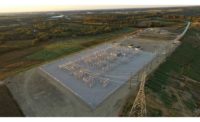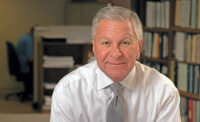In a case of déjà vu, three groups representing U.S. structural engineers are launching a collaboration initiative to bolster the profession. The first step is the release of a joint vision for progress.
The intention is to “make sure we are all heading in the right direction and not duplicating efforts,” says David W. Cocke, president of Structural Focus and, as 2019 president of the American Society of Civil Engineers’ Structural Engineering Institute (SEI), the catalyst for the new united front.
The 30,000-member SEI, formed in 1997, is joined by the Council of American Structural Engineers, formed in 1987, which has 200 member firms; and the National Council of Structural Engineers Associations. NCSEA was formed in 1993. It represents 44 local and regional SEAs. Of the total of 11,500 members, 800 are also SEI members.
The current joint initiative comes 16 years after a similar attempt to cooperate beyond jointly publishing NCSEA’s Structure magazine (ENR 2/10/03 p. 12). The Structural Engineering Licensure Coalition and the Structural Standards Coordination Council grew from that 2003 effort.
Currently, the groups, whose leaders meet twice a year, are intent on reforming structural engineering education and improving mentoring opportunities for young engineers. They also plan to enhance professional development, advocate licensure and promote diversity. Other broad goals include implementing performance-based codes and standards and encouraging resilience in the built environment.
To date, there is no action plan. It is up to each group to lay out a path forward and inform the others, says Jon A. Schmidt, senior associate structural engineer with Burns & McDonnell and NCSEA’s current president.
“We can be more effective working together than apart,” says Corey Matsuoka, a senior principal with SSFM International and CASE’s most recent past chair.





Post a comment to this article
Report Abusive Comment